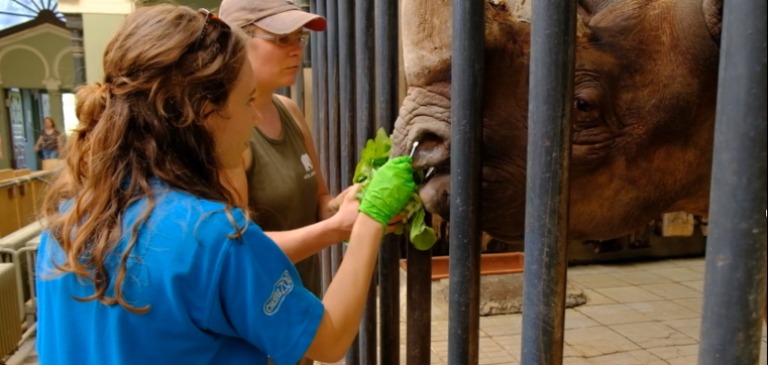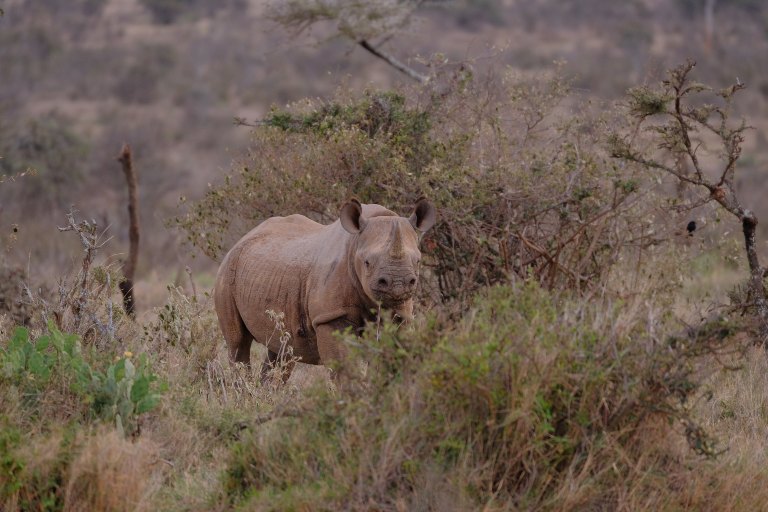Fighting to deliver healthy future environments in Africa
Experts at The University of Manchester are working with colleagues in east and central Africa on parallel research projects to understand the spread of human disease by insects and protect endangered species, including the black rhino.
The negative impact of growing human populations on natural environments
The impact of the global growth in human populations causes a range of problems for the natural environment in Africa.
Pest species such as mosquitoes breed rapidly and generate millions of new insects each year. This means that they can quickly mutate or combine genes that allow them to evolve and respond to human environmental change, for example, the evolution of insecticide resistance or adapting to new habitats we create for them. Conversely, large endangered species have little capacity to respond evolutionarily to environmental change due to their small population sizes and long generation times.
University teams partnered with local researchers and organisations to explore and address these opposing issues. The research used an evolutionary approach, sampling genetic information from natural populations and reading evolutionary signatures from this information, to understand, for example, how mosquitoes are evolving to spread human diseases and whether wildlife can cope with the impacts of poaching and loss of habitat.

Understanding how yellow fever mosquitoes spread disease
The yellow fever mosquito originated in African forests where they originally used water in tree holes to lay their eggs and fed on forest animals, contributing to the spread of viruses. But as humans entered these forests, the mosquitoes started to move viruses such as Zika from non-human primates into humans.
The mosquitoes have since undergone an evolutionary change to adapt to human habitats. Now, they breed in water-filled containers around our homes instead of tree holes and – due to new mutations in odour detection – prefer to feed on an abundant food source: humans. These evolutionary changes have helped this mosquito to spread from Africa to the rest of the tropics and subtropics in the last few hundred years. As a result, yellow fever mosquitoes are now the main cause of viral diseases such as Zika and dengue.
University of Manchester research in Ethiopia, Kenya, Tanzania, Uganda, Benin and the Democratic Republic of Congo has revealed that the new human-feeding gene variant is now spreading through east African mosquito populations. This, along with globalisation introducing viruses from Asia, has likely resulted in increased dengue cases in east Africa in recent years.
Monitoring and controlling yellow fever mosquitoes
Research teams continue to monitor the spread of this human-feeding gene variant, including whether it moves (in the future) into areas where there are endangered populations of gorillas and chimpanzees, which could introduce (or reintroduce) dangerous viruses into these highly threatened wildlife species.
The use of pyrethroid insecticides (a chemical non-toxic to humans) is the main way we control yellow fever mosquitoes and the diseases they transmit. There is very little resistance to these insecticides in Africa, but resistance is widespread in the Middle East and southeast Asia, indicating that insecticide resistance genes will likely either move into Africa or evolve from new mutations occurring locally. Researchers will continue to monitor resistance so that control strategies for the disease can be modified if needed.

Protecting the black rhino from extinction
The University’s parallel research on wildlife in Africa currently focuses on the black rhino, a species heavily impacted by poaching and loss of habitat, resulting in dramatically reduced population sizes.
An estimated 850,000 black rhinos once roamed the continent. Now, only about 1,000 eastern black rhinos remain in east Africa, with about 100 living in captivity in European zoos. Rhinos play an important role in savannah ecosystems and are icons for human conservation efforts. Rhino protection also forms an umbrella that simultaneously conserves other endangered savannah wildlife. Researchers are working with the European Association of Zoos and Aquaria (EAZA) and Akagera National Park in Rwanda to evaluate and inform the reintroduction of the black rhino following its loss there during the country’s civil war.
The eastern black rhino bred in European zoos and South Africa have been introduced into Akagera in the last few years and teams are studying the genetics of the captively bred populations and the individuals in Akagera to characterise their genetic health.
Maintaining diversity in immune system genes is critical to withstand a wide range of diseases, which is a major selective pressure that animals face in the wild. Long-term, the research aims to inform the choice of individuals for future reintroductions to maximise genetic diversity, which will minimise the risk of genetic disease and increase the ability to withstand the threat of other diseases.
Sustaining the natural environments of the future
University research will contribute to understanding how we can reduce the evolutionary pressure for mosquito vectors of viruses to spread diseases to humans and endangered wildlife, as well as ensuring wildlife maintains genetic resilience for long-term conservation. This understanding is essential to develop a sustainable and respectful way to live with nature, creating healthy future environments for humans and wildlife.
Meet the experts
- Dr Catherine Walton, Senior Lecturer, Earth and Environmental Sciences.
- Hussain Alqahtani, PhD student researching the spread of the yellow fever mosquito.
- Abadi Mashlawi, PhD student researching the evolution of insecticide resistance in the yellow fever mosquito.
- Franziska Elsner-Gearing, PhD student researching conservation genomics in black rhino.
- Ben Broomfield, PhD student researching immune gene diversity in black rhino.
- Kennedy M. Mbanzulu, PhD student, Southern African Centre for Infectious Disease Surveillance (with a training period in Manchester funded by the Global Challenges Research Fund).
- Dr Martha Kaddumukasa, Lecturer at Kyambogo University, Uganda (previously a Research Fellow at Manchester funded by the Global Challenges Research Fund).
